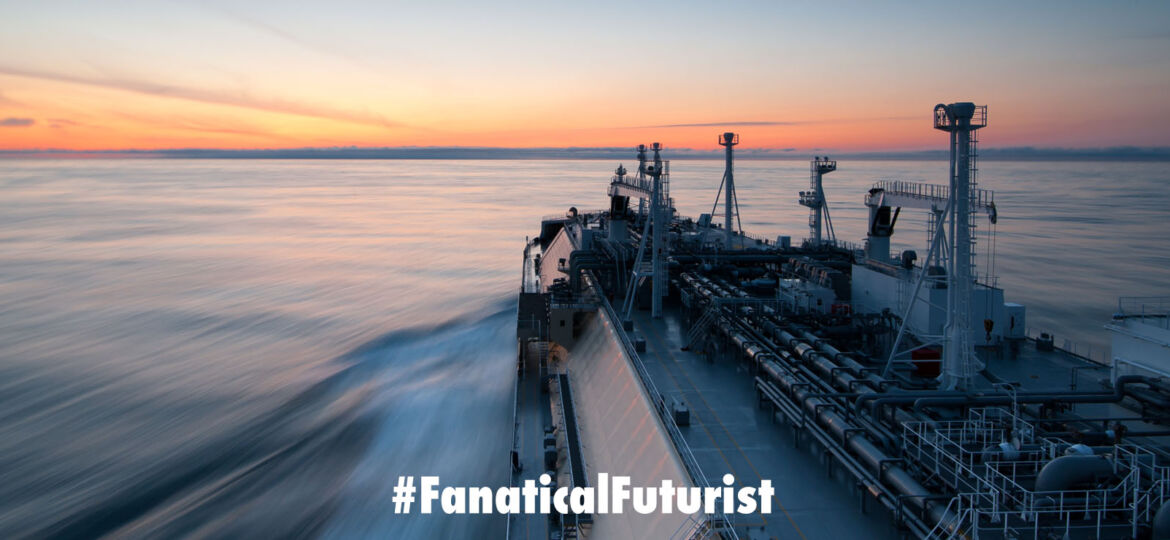
WHY THIS MATTERS IN BRIEF
By 2050 the aviation and shipping sectors need to be carbon neutral, which means they need to wean themselves off of polluting fossil fuels fast.
 Love the Exponential Future? Join our XPotential Community, future proof yourself with courses from XPotential University, connect, watch a keynote, or browse my blog.
Love the Exponential Future? Join our XPotential Community, future proof yourself with courses from XPotential University, connect, watch a keynote, or browse my blog.
You might have heard of Green Hydrogen, or not, a zero emission fuel that’s so called because it’s produced solely from renewable energy sources. And now, as society continues to try and find ways to reduce its environmental footprint and decarbonise a broad range of sectors and industrial processes Green Ammonia is starting to make its own waves – especially as it could be both a key zero emission fuel and fertiliser that could be used to decarbonise three of the world’s most polluting industries – agriculture, transportation, including future hypersonic aircraft, and shipping.
Published the other week the IPCC’s “Code Red” climate report warned that limiting global warming to close to 1.5 degrees Celsius or even 2 degrees Celsius above pre-industrial levels would now “be beyond reach” in the next two decades “without immediate, rapid and large-scale reductions in greenhouse gas emissions.”
So, against this sobering backdrop a number of firms are attempting to reduce the environmental effects of ammonia production, which is responsible approximately 2% of the world’s carbon dioxide emissions, according to a policy briefing from The Royal Society.
On Monday, for instance, three Norwegian firms – energy powerhouse Statkraft, Aker Clean Hydrogen and fertilizer specialist Yara – launched a company called HEGRA focused on the production of so-called “green” ammonia.
According to Statkraft, which is itself owned by the Norwegian state, HEGRA “will focus on electrifying and decarbonizing an ammonia plant located in Herøya, Norway.”
The broad idea behind the initiative is that it will use renewable energy to generate ammonia at scale. The ammonia would then be used to produce carbon-free fertiliser and fuel which Statkraft also described as “a promising zero-emission fuel for the maritime sector.”
Speaking to CNBC’s “Squawk Box Europe” on Monday morning, Yara CEO Svein Tore Holsether stressed the importance of developing big-picture solutions.
“The technology is there, but it’s also about turning it into a product,” he said. “And the nice thing about ammonia production and fertilizer production is that you have an existing infrastructure already.”
“By converting part of that to renewable energy using hydropower, as we’re talking about here in Norway, we can produce a renewable fertiliser product and supply that to the farmers at scale, rather quickly.”
In terms of a timeline though Holsether indicated it would take five to seven years to get the project up and running.
The creation of HEGRA is just one example of how companies are looking into ways to reduce the emissions associated with ammonia production.
In Australia, Yara is also working with ENGIE on the development of a plant that will produce renewable hydrogen and ammonia. The project is backed by a grant of 42.5 million Australian dollars ($31.15 million) from the Australian government.
Last week, oil and gas giant BP also announced that “the production of green hydrogen and green ammonia using renewable energy” was now technically feasible at scale in Australia as well as the UK.
The energy major’s conclusion is based on the findings of a feasibility study announced in May 2020 and supported by the Australian Renewable Energy Agency, solar developer Lightsource BP and professional services firm GHD Advisory.
In a statement, BP described the vast state of Western Australia as being “an ideal place” for the development of “large scale renewable energy assets that can in turn produce green hydrogen and or green ammonia for domestic and export markets.”
















